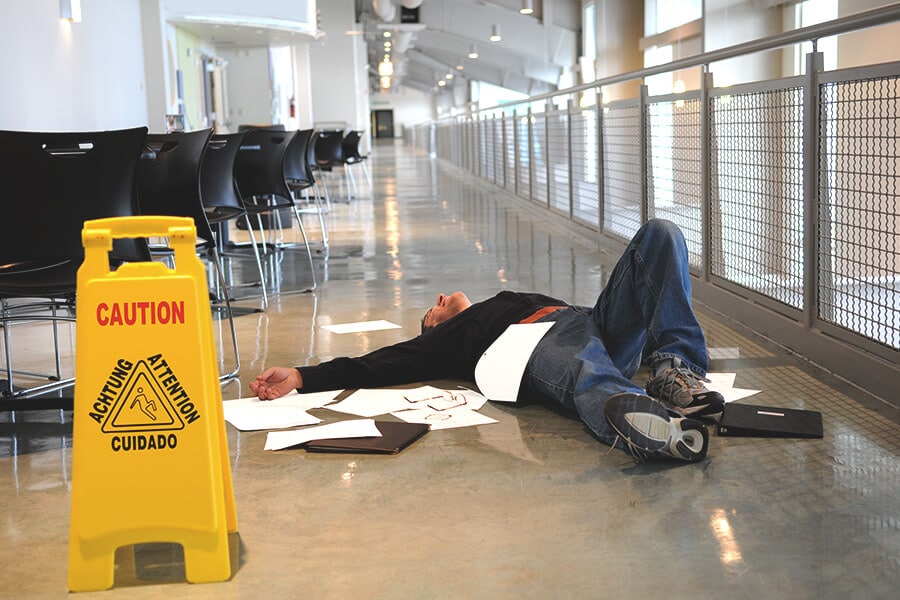How Settlements for Slip and Fall Cases are Determined

One minute you can be purchasing some lunch in a grocery store and the next minute you can find yourself on the ground and unable to get up. The last thing you are likely thinking as you are getting your bearings on the store’s floor is what money you can expect to receive from the store after having fallen on a wet, slippery surface. At that initial moment, whether you have an immediate injury that will heal completely or quickly, or whether you will experience months of therapy and an injury that is stubborn to heal, will not likely be determined immediately. Learning the extent of your injuries and the specific rules Arizona uses to govern such slip and fall cases should be your next move.
Rules for Slip and Fall Cases
Like other states, Arizona has rules for sorting out whether the person who fell has any liability for causing the accident. The rule is a “pure comparative fault” rule applied by the state and, it usually reduces the amount of a slip and fall insurance settlement or jury award. This rule, which can reveal slip and fall case weaknesses, outlines a comparison between the liability of both the owners of the location of the fall and the actual fall victim. Both sides will demonstrate any possibility of responsibility on both sides: The Injured and the owners of the Site of the fall.
Example of Slip and Fall Injury Case
John walks into a deli, and slips and falls on the tile floor that had just been mopped. No sign was present indicating a wet floor. John decides to file his case in court to attempt to gain compensation for his injuries. An investigation reveals evidence of the situation and the jury ultimately determines John’s total damages equal to $18,000. However, the jury also decided John was 10 percent at fault for the accident, and the deli was 90 percent responsible. John’s $18,000 reward then is reduced by 10 percent or $1,800 for the portion that he was found responsible for.
How Slip and Fall Compensation is Awarded
To arrive at your case value, add up the hard and soft costs of your injury. The most immediate costs are likely to be medical bills. As you receive treatment for your injuries, calculating these costs is objective and, in most cases, simple. All that is needed is an accounting of all medical bills related to the injuries. Next is a very subjective follow-up to medical bills, calculating the degree of pain and suffering endured. An experienced personal injury attorney can help you assess your accident, your personal limitations caused by the injuries, and how significant a hit your quality of life has experienced because of the fall. Lost income costs, past and future, also play into what your target award should be.
Slip and fall case awards in the United States total billions of dollars each year. Most slip and fall cases cost the victims an average of $30,000 but each case has its own specific facts. If you or a loved one has been hurt in a slip and fall, determining the value of your case and the extent of your injuries is a critical key in deciding if you should go to court or not. If insurance adjusters are contacting you with offers of a settlement, having your case reviewed by an experienced personal injury attorney can help you make an informed decision.
Whether your potential case is of low value, it can make a difference in your day-to-day life moving forward. Even with this information, deciding if you have a strong case or one worth pursuing can be difficult to do. Having your case reviewed by an experienced, reputable personal injury attorney can shed light on your situation, and, your future. Call our office today to schedule a consultation to get some clarity from our firm. We know how to help.
